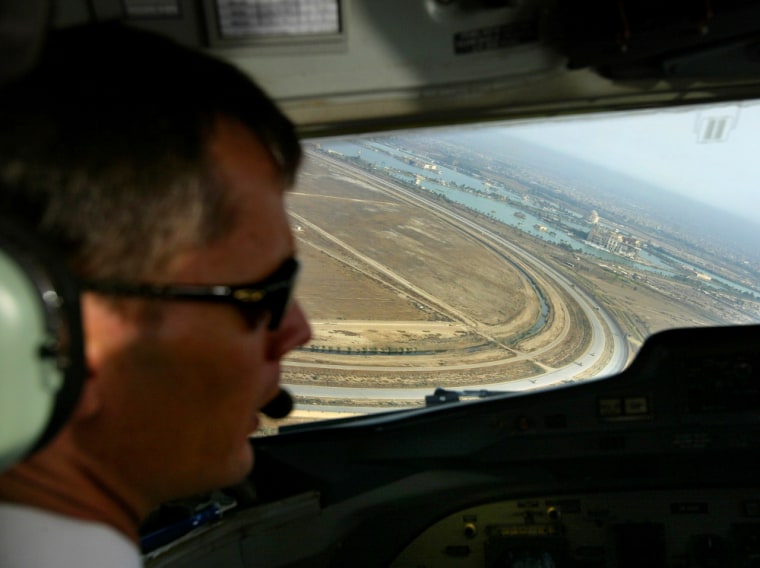"Traffic! Traffic!" blares the cockpit's automated collision warning system just as the pilots of Royal Jordanian Flight 814 pull their airliner from its steep corkscrew descent and begin the final approach to Baghdad International Airport.
Two U.S. Army helicopters taking off from the airport have crossed into the path of the passenger jet. The crew banks sharply to the left, avoids the choppers and then levels off the 100-seat Fokker F-28 airliner as it settles onto the runway.
"One thing you can say about these flights is that they're not dull," says Robert Brand, the South African pilot. "They're never uneventful. There's always something there to challenge your flying skills."
Royal Jordanian Airlines and Iraq's newly reconstituted flag carrier, Iraqi Airways, operate the only scheduled commercial service to and from Baghdad. The one-hour flights to and from Amman, Jordan, are used by foreign contractors, journalists, Iraqi civilians and others eager to avoid the highly dangerous drive along the desert highway linking the two capitals.
"We decided to fly because they said the road is not so safe," says Doha Rouhi, an interior decorator from Baghdad returning on Flight 814 from a visit to Amman.
Although there have been no major incidents since U.S. authorities allowed resumption of civilian flights last year, the crews flying the route say they frequently have to dodge military traffic near the airport.
"When military operations are going on, they'll just close the airport to civilian traffic for days, but even when they're not, you always have to watch the Americans," says Brand, who hails from South Africa's capital, Pretoria.
Brand works for Pretoria-based Air Quarius Aviation, a charter operator that provides planes and crews for numerous airlines in East Africa and the Middle East, including Royal Jordanian.
Plain white planes
The company uses F-28 twin jets -- white with no company logo -- that are particularly well-suited to the evasive maneuvers required for flying in and out of Baghdad's airport, where pilots constantly worry about the possibility of ground fire by insurgents.
Last year, a civilian cargo jet was hit after takeoff with a shoulder-launched missile, and earlier this year a burst of automatic gunfire killed a passenger aboard an Australian C-130 Hercules transport plane. More recently, a bomb was found in the baggage of a passenger leaving Baghdad, prompting a warning from the U.S. Embassy about the dangers of using the flights.
To lessen the threat of being shot at, pilots have adopted a "nonstandard approach" for landings: They arrive at 15,000 feet and then descend sharply in a stomach-churning series of tight, spiraling turns that pin passengers deep in their seats. The Fokker's clamshell airbrakes at the back of the fuselage keep airspeed from rising uncontrollably during the dive.
After landing, crew perform a quick walkaround to check fuselage and wings for bullet holes.
"We try to keep above the confines of the airport at all times when we're taking off or landing," Brand says during the landing.
As he speaks, a heavily laden Antonov AN-12 cargo plane climbs steeply past the descending Fokker, black smoke streaming from its four turboprop engines.
Baghdad's airport -- once known as Saddam International Airport -- has been closed to nonmilitary flights on several occasions in recent weeks.
During the attack on the rebel stronghold of Fallujah, U.S. forces banned civilian flights to Baghdad for seven days, giving the idled South African crews a chance to visit some of Jordan's main tourist attractions.
"We visited Petra, the Dead Sea and Aqaba," says the Flight 814's senior flight attendant, Salemina Mohlongo.
